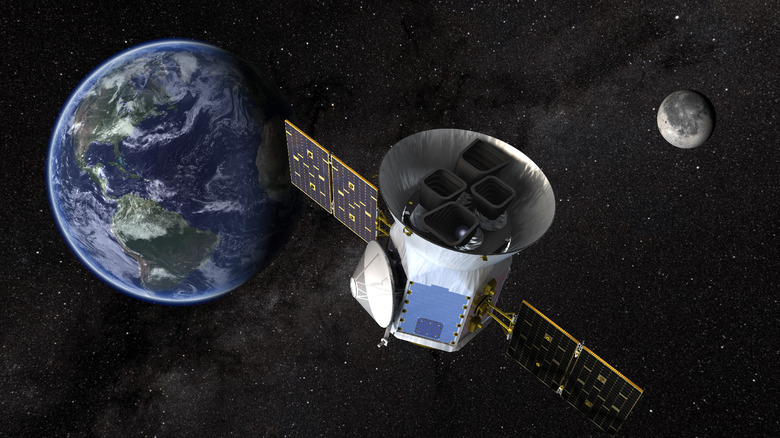NASA's Exoplanet Hunter Finished Its Mission... Sort Of
- NASA's TESS, the Transiting Exoplanet Survey Satellite, has completed its primary mission and will now move on to an extended mission where it will continue to hunt for new worlds.
- TESS has already spotted at least 66 new planets, and scientists are working to confirm the discovery of another 2,100 or so.
- The spacecraft will now return to scanning the southern skies in search of new planets and astronomical events.
NASA's most powerful tool for spotting exoplanets is TESS, the Transiting Exoplanet Survey Satellite. The spacecraft scans the skies for tiny dips in star brightness that reveal the presence of distant planets, even if we can't directly see them. Now, after two years, TESS has officially completed its primary mission, but like many of NASA's tools, TESS still has plenty of life left and will begin an extended mission that NASA hopes will lead to even more incredible discoveries.
Thus far, TESS has mapped roughly 75% of the sky as seen from Earth. It does so in large chunks, monitoring sections of the sky for changes in star brightness over the course of months. During its primary mission, TESS discovered 66 confirmed exoplanets, and a whopping 2,000+ that are still awaiting confirmation.
The technique TESS uses to spot exoplanets is just as simple as it sounds. The satellite stares at stars for an extended period of time and, when the brightness of the star dips at regular intervals, it's a hint that there's probably something (or several somethings) orbiting the star and occasionally blocking its light.
At first, TESS was tasked with mapping out the southern sky. Once it completed that job, it moved on to mapping the northern sky up until its primary mission was completed. Now, as NASA explains, it will flip once again and begin re-examining the southern sky in search of new discoveries.
"Now in its extended mission, TESS has turned around to resume surveying the south," NASA notes. "In addition, the TESS team has introduced improvements to the way the satellite collects and processes data. Its cameras now capture a full image every 10 minutes, or three times faster than during the primary mission. The faster measurements will allow TESS to better resolve brightness changes caused by stellar oscillations and to capture explosive flares from active stars in greater detail."
NASA plans on utilizing this new technique going forward:
"These changes will remain in place for the duration of the extended mission, which will be completed in September 2022. After spending a year imaging the southern sky, TESS will take another 15 months to collect additional observations in the north and to survey areas along the ecliptic — the plane of Earth's orbit around the Sun — that have not yet been imaged by TESS."
Just detecting the presence of an exoplanet is already tough enough, but actually imaging it will require much more advanced hardware. The James Webb Space Telescope — if it ever actually launches — could bring us a step closer to understanding the distant worlds we've already spotted, while also allowing us to find new ones.
